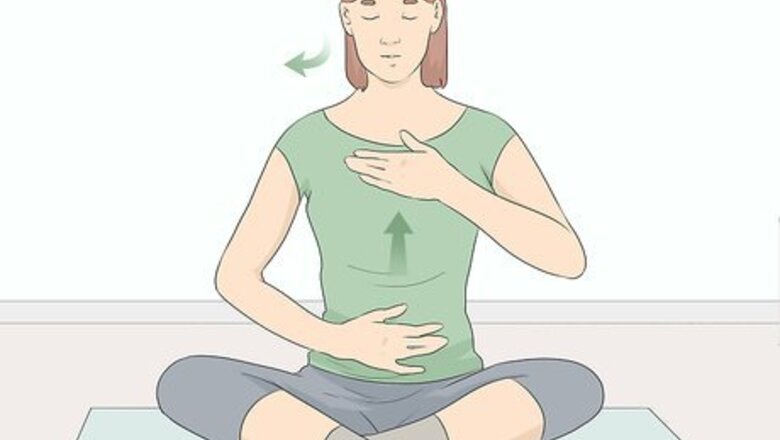
views
Training Techniques for Holding Your Breath
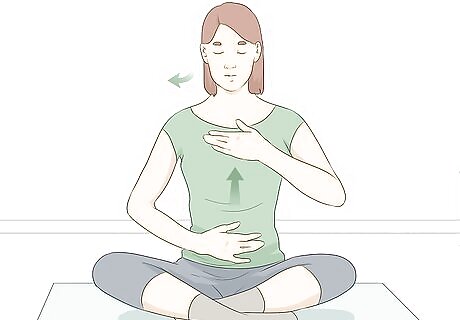
Practice deep breathing. Before holding your breath, inhale and exhale slowly from deep within your diaphragm. By doing this, you're ridding your lungs of low-quality air. Spend five seconds breathing in, then hold the breath for one second, before breathing out for ten seconds. Continue deep breathing for two minutes, and be sure that when you exhale, you push out every last "drop" of air. Tip: As you exhale, push your tongue up against your teeth.This forms a valve which helps to control the release of air. Your breath should make a hissing sound as it is released. Deep breathing allows your body to take in excess oxygen, which it can then store in the blood cells. This helps when holding your breath as your body can use the stored oxygen to continue functioning, even when you are not breathing.
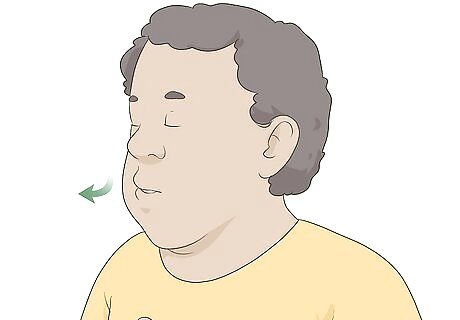
Purge the CO2 from your lungs. When holding your breath, the pressure you feel in your lungs is not the result of a need to breathe, but rather the result of a build-up of CO2, fighting to be released. This build-up of CO2 becomes increasingly painful as time goes on. To minimize this build-up, it is necessary to purge any pre-existing CO2 from your lungs, before holding your breath. To do this: Exhale forcefully, pushing as much air out of your lungs as possible. Puff out your cheeks as you do this, and imagine you are trying to blow a toy sailboat across a stretch of water. Once you have exhaled completely, inhale quickly and repeat. Try to keep your body as still as possible while you do this, to avoid expending any of the stored oxygen from the previous step.
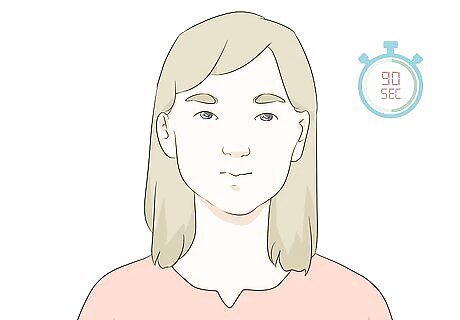
Take a breath and hold it for one minute and thirty seconds. This is a practice run which will allow your body to adjust to the sensation of going without air. Use a timer to count down the 90 seconds, and don't attempt to hold your breath for any longer just yet. When you inhale, don't breathe in so much that you're about to pop; this creates tension in your body and causes you to expend more energy. Instead, fill your lung capacity to about 80-85% capacity so that you still have room to relax. Once the 90 seconds is up, exhale briefly to rid your lungs of the used air, then take three breaths, inhaling and exhaling fully. This is known as semi-purging.
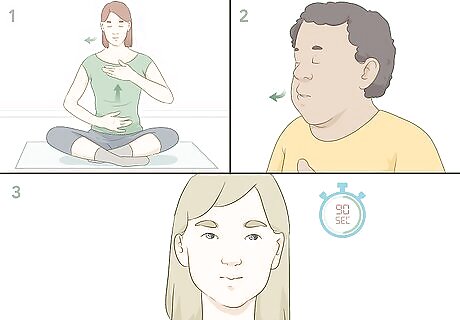
Repeat the process of deep breathing and purging, then hold your breath for two minutes and thirty seconds. Once the first 90 second practice run is up, repeat the deep breathing and purging exercises. Perform each exercise for a duration of one minute and thirty seconds. Once this is done, take a breath and hold it for two minutes and thirty seconds, timing it on a stopwatch. Do not attempt to hold your breath for any longer than this. Once the time is up, exhale to release the used air and take three semi-purge breaths. Follow this with two minutes of deep breathing and a minute and a half of purging. You are now ready to try holding your breath for as long as possible.
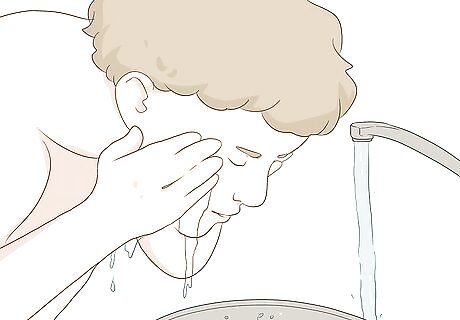
Splash cold water on your face. At this point, you may decide to splash your face with some cold water before attempting to hold your breath. It has been observed that putting a person's face in contact with cold water triggers bradycardia, or the slowing of the heart rate, which is the first phase of the mammalian diving reflex. However, this step is purely optional. You don't need to actually put your entire head underwater, though. Just splash some cold water on your face right before you hold your breath, or try using a cold, wet washcloth. Don't use an ice pack instead of water, though; the same study suggests that the shock of something too cold triggers other reflexes. Just make sure the water is at a temperature of approximately 70 °F (21 °C) and that the rest of your body is in a relaxed position.
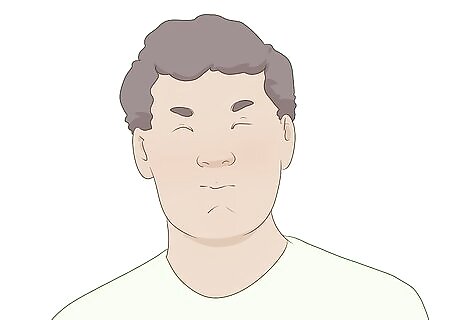
Take a breath and hold it for as long as possible. Assume a comfortable seated position and take a deep breath, filling your lungs to about 80-85% of capacity. Hold your breath for as long as possible, staying completely still to avoid expending unnecessary energy and wasting oxygen. It is usually better to have someone else timing your progress, as time will pass more quickly and you will be able to hold your breath for longer if you are not constantly watching the clock. Holding your breath for long periods of time can be painful, and it usually necessary to find a way to distract yourself if you are to successfully achieve your goal. One popular distraction technique is to move through the alphabet from A to Z, thinking of a friend, celebrity or historical figure whose name begins with each letter. Aleix Segura Vendrell, who set a world record for holding his breath underwater for 24 minutes and 3 seconds, is a proponent of this very technique. Don't hold air in your cheeks. This method is meant for an air reserve, which requires "letting go" of the air in your lungs and switching it with the air in your cheeks. This is known as "circular breathing" and can be very difficult to achieve, usually resulting in the breath-holder losing both air reserves. Therefore, it may be best to avoid this method for the time being.
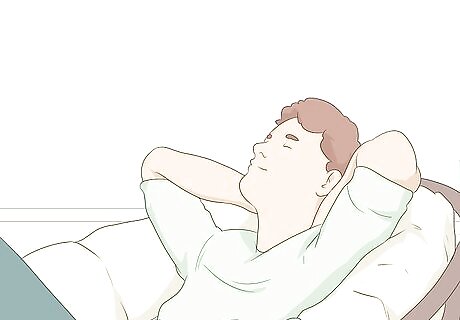
Relax every muscle in your body. It is vital that you relax completely and release any tension from your body as you hold your breath. Close your eyes and focus on releasing the tension from each body part in turn, starting with your feet, and moving slowly upwards along your body, all the way up to your neck and head. By doing this, it is possible to significantly lower your heart rate and increase the time you are able to hold your breath for. Concentrate on something that's relaxing to you. When you can't concentrate anymore, distract yourself by doing something with your hands, like counting to 99 with your fingers. Try not to move during any point when holding your breath. When you move, you waste oxygen and that will cut down the time you're able to go without breathing. Stay still.
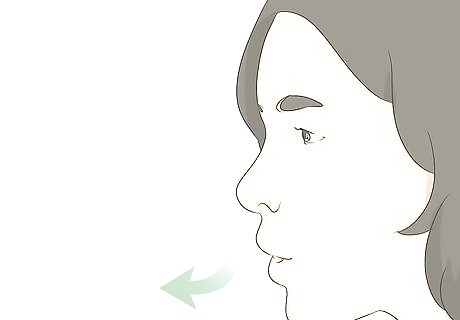
Exhale slowly. When you can't hold your breath anymore, try to avoid exhaling all the air in your lungs in a mad rush. First, exhale about 20% of your air, then inhale again so that oxygen gets to your most critical areas faster. Then you can exhale and inhale completely.
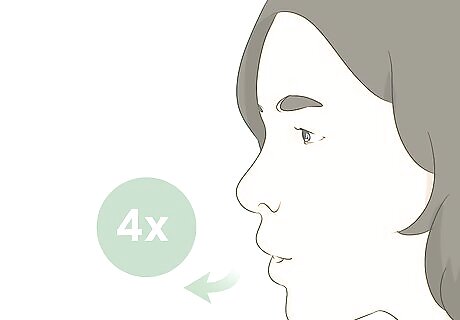
Repeat these steps 3-4 times per session. It is not recommended to do this any more, as it could damage your lungs and body. Try one session in the morning and one session at night if you wish. Keep practicing and before you know it, you will be able to hold your breath for several minutes.
Taking the Necessary Safety Precautions
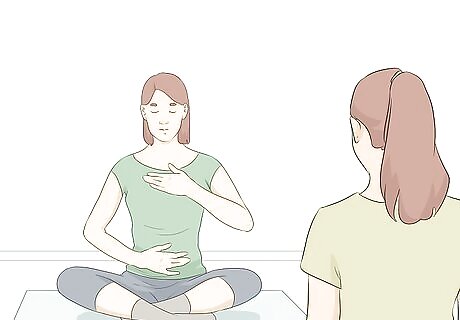
Always practice with a partner. It is highly advisable that you practice holding your breath with a partner. The main reason for this is that they can ensure your safety if you happen to pass out (which is fairly common during limit-testing training sessions), preventing you from hurting yourself and taking care of you while you recover your senses. In addition, a partner can help to time your breath-holding sessions, notifying you at each 30 second interval.
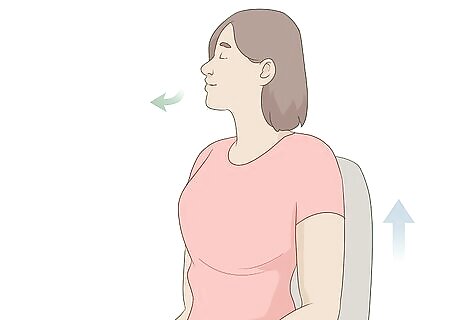
Practice sitting up, rather than lying down. The best position to practice holding your breath in is sitting upright in a comfortable position, such as on a sofa or armchair. This allows you to expend as little energy as possible while holding your breath. It is not advised that you lie down while holding your breath, as you run the risk of choking on your tongue if you happen to pass out.

Do not attempt to do this underwater, unless supervised by a professional. Although the purpose of learning to hold your breath for longer is usually for use underwater, you should never do underwater training alone, without supervision. As mentioned before, it is quite common for people to black out or lose consciousness after holding their breath for prolonged periods, and if this happens underwater it can lead to drowning. Note: If you do decide to practice with a partner, make sure that you decide on a hand signal which you can give at regular intervals to indicate to your partner that you are okay. Even practicing with a partner can be dangerous, as an untrained eye may be unable to tell the difference between someone who is holding their breath and someone who has passed out.
Optimizing Your Lung Capacity

Do exercises to increase your lung capacity. While there is no way to increase your lung size, there are many ways to increase the amount of air your lungs take in, and the efficiency with which they capture oxygen. In particular, a rigorous exercise routine can help to strengthen your lungs and maximize their capacity to hold air. Do plenty of cardio. Incorporating some intense cardio workouts into your weekly routine can do wonders for your lungs. Running, skipping, aerobics and swimming are all great forms of cardiovascular exercise which get the blood pumping and the lungs working hard to supply the body with the oxygen it needs to keep going. Try doing exercising in intense 30 minute bursts, pushing your body to its limits, to achieve the best result. Exercise in water. Exercising in water (swimming, water aerobics, underwater weight training) is also a form of cardio exercise, but the water provides an element of resistance which requires the body to work harder to complete each task. As a result, the lungs need to work harder to supply the body with oxygen, causing their air capacity to increase significantly over time. Work-out at high elevation. At higher elevations, there is less oxygen in the air, meaning your lungs have to work harder to supply the body with oxygen. This is an excellent way to strengthen the lungs, but you must be careful not to train to hard, or you could potentially fall victim to altitude sickness.

Lose weight. Any excess baggage reduces your body's efficiency in using oxygen, as there is increased body mass to which your blood must pump oxygen. As a result, many competitive breath holders will attempt to shed any extra pounds in the weeks coming up to a competition. This weight loss should be achieved in a strictly healthy way - through exercise and balanced diet - as weakening your body through crash dieting will negatively impact your ability to hold your breath. The world record breath holder, Aleix Segura Vendrell, is reported to have lost weight for 4 months before attempting to beat the world record for holding breath underwater, in an effort to improve his ratio of body volume to lung volume.
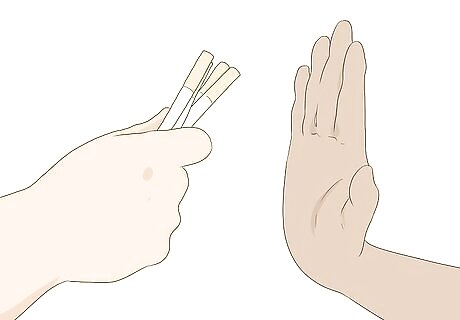
Quit smoking. The fact that smoking has a negative impact on lung strength and capacity is common knowledge. Quitting can considerably increase your lungs' ability to release carbon dioxide and absorb oxygen, even within a matter of weeks. So if you are trying to strengthen your lungs and increase their capacity, giving up smoking is undoubtedly the first thing on the to-do list. It is important to quit inhaling any substances, not only give up regular tobacco cigarettes. Vape pens or electronic cigarettes are also harmful to your lungs. You should also try to avoid second-hand smoke as far as possible, as inhaling someone else's cigarette smoke can have a negative effect on your lungs.
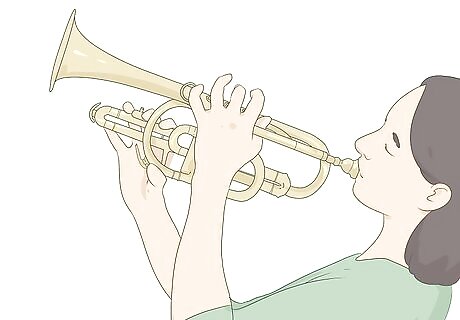
Take up a wind or brass instrument. These types of instruments require plenty of lung power, making them a great way to improve lung strength and increase your ability to control your breathing. And aside from that, playing an instrument is a fantastic life skill, which can provide immense personal satisfaction. Tip: If you have a good voice, singing is another great musical aid to improving lung power. Singing requires immense control of one's breathing, making it an excellent complimentary activity for aspiring breath-holders. The flute, clarinet, oboe and saxophone are all good options when it comes to wind instruments, while the trumpet, trombone and tuba are popular brass options.




















Comments
0 comment